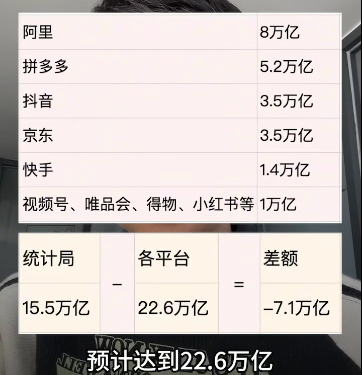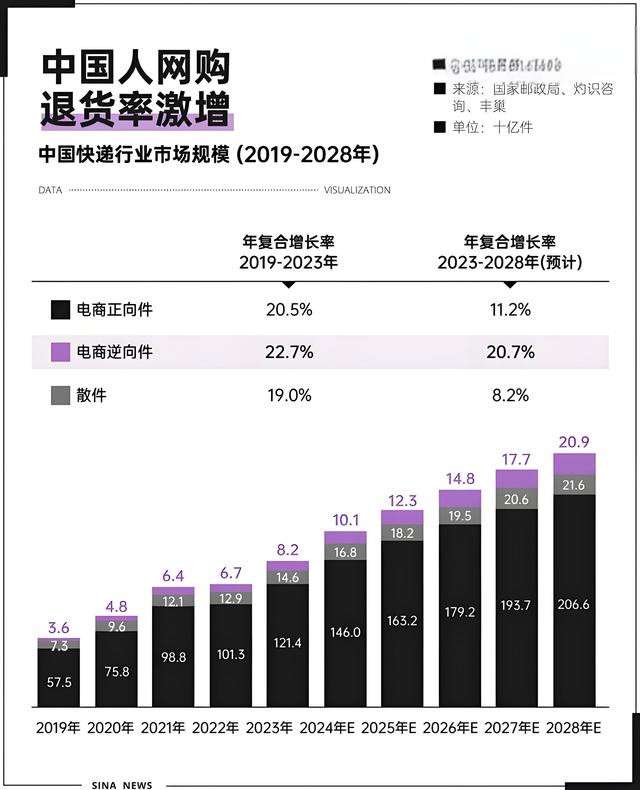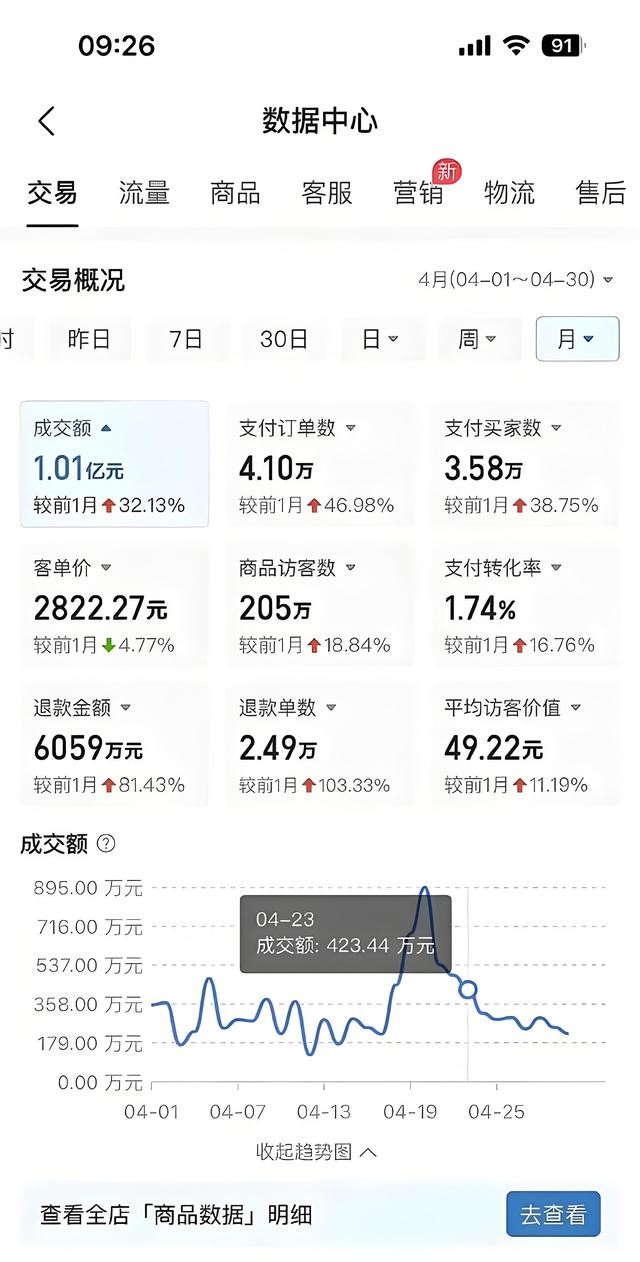I read a set of shocking data about e-commerce. According to data released by the Bureau of Statistics, the major e-commerce platforms sold a total of 15.5 trillion yuan in 2024, and the sales of several major e-commerce platforms combined are expec...

I read a set of shocking data about e-commerce.
According to data released by the Bureau of Statistics, the major e-commerce platforms sold a total of 15.5 trillion yuan in 2024, and the sales of several major e-commerce platforms combined are expected to reach 22.6 trillion yuan, with a difference of 7.1 trillion yuan between the two. The data released by the Statistics Bureau should be the final amount of e-commerce platforms that are indeed collected, so there is no problem.
In other words, the 710 million yuan is likely to be returned.

The operation was as fierce as a tiger, and finally I was busy with loneliness!
The boss who does clothing sales does not have day and night. No matter which time, they are looking for goods, preparing, packaging, and shipping...
, and there may be only one ending in the end, return the goods!
At three o'clock in the morning, the roller shutter door of a clothing warehouse made a harsh friction sound.
The boss lady stepped on the unopened return package on the ground and turned on the lights in the dark - the express box piled up on the ceiling collapsed, and the 2024 spring floral dress poured down like snowflakes.
These new clothes with creases, and the labels are printed with "3.8 Queen's Day Special Offer", have now become out-of-season waste products. This is the most magical daily life of e-commerce today: 19.5 billion yuan of goods are in the closed trading loop every day. Their only value is to complete one absurd cycle after another on express delivery orders.


are all doing useless efforts to deceive themselves. Data released by the Bureau of Statistics:
E-commerce retail sales in 2024 were 15.5 trillion yuan, while the statistical data released by the platform was 226,000 yuan.
The difference of 7.1 trillion yuan in the middle is enough to buy 230 million iPhones or send each person a cash red envelope of 5,000 yuan. But the reality is that this money never really flows into anyone's pocket. They are just electronic ghosts flashing on platform reports, digital undeads jumping in the merchant's backend.
The anchors who shouted "Three, Two, One Link" at the top of their lungs actually had no idea what kind of fate that the empty 299 yuan cashmere coat was experiencing.
48 hours later, if no more than half of these packages that span thousands of mountains and rivers are returned, it is victory. Don't be too surprised if you sell 10 pieces and return seven or eight pieces.
This is the current e-commerce platform, the unique "seven days no reason" curse.
If the items returned from the product can be sold again, it means that I have encountered a conscientious buyer, and some of the clothes and pants I have worn are also returned. What can you do?

The avalanche is coming, and no snowflake is innocent.
The merchant bears all losses, can the platform survive?
The current e-commerce platform is forcing merchants to become modern Sisyphus. The account book of a female clothing store owner: After participating in the "100 off for 199 yuan discount for every 199 yuan" event, the actual payment was 19.9 yuan, but he had to pay 6 yuan freight insurance, express delivery fee, 3 yuan platform deduction, and 8 yuan promotion fee. When the fourth item returned, the transaction began to pay for the money.
We are like casino dealers, watching customers bet with our chips.
The absurd thing is the secondary damage caused by returns: each returned summer clothing requires a 12 yuan reverse logistics fee. When they travel 2,000 kilometers to return to the warehouse, the autumn clothing has already passed the season.
Last year on Double Eleven, a friend's warehouse piled up 80,000 pieces to return, and the storage fee alone ate his last working capital.
The e-commerce calendar has long become the schedule of the madhouse.
In previous years, there were only 618 and Double Eleven cliffs, but now it has become a sea of swords and fires that are endless all year round - 38 Festivals, 520, 616, 99, Double Twelve...
Each number is turned into gold and promoted symbols by the platform.
The merchants were like racehorses injected with stimulants, running under the whip of "the first 4 hours of breaking" and "the limited-time instant killing".
A snack shop owner showed magical backstage data: orders soared by 300% during the big sale, but the return rate soared to 45%. \"Do you think it's a blast? It's just that the platform compressed three-day orders into three-hour data fireworks.\"
What's even more terrifying is that consumers are developing drug resistance. Last year, they need to be 50% off to stimulate their desire to buy, and this year they have to be 30% off before they can react.

Conclusion.
On this e-commerce ruins soaked in the flood of 7.1 trillion returns, each participant became a sacrifice to the digital game.
When express order numbers become the cheapest currency in circulation, and when the GMV myth becomes a black hole that swallows the real economy, maybe we should ask: Have we created a new business form or created a large-scale playhouse that affects 1.4 billion people?
platform can hold data and hype performance.
Seller can only take the return and is messy in the wind!
